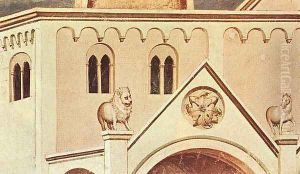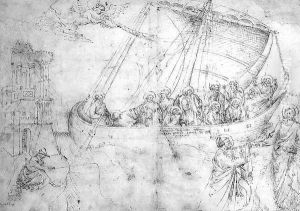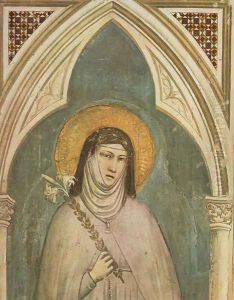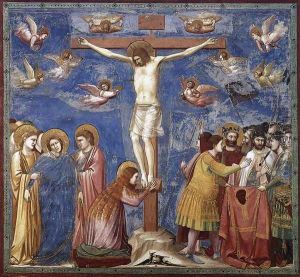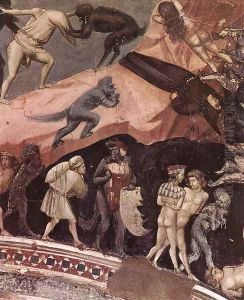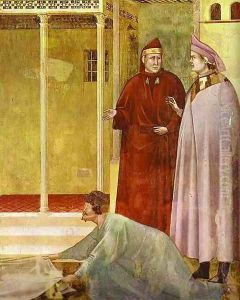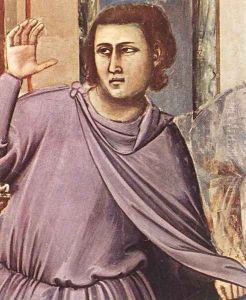





No. 27 Scenes from the Life of Christ- 11. Expulsion of the Money-changers from the Temple (detail 2) 1304
-
About Reproduction
Discover the allure of art with our faithful reproduction of "No. 27 Scenes from the Life of Christ- 11. Expulsion of the Money-changers from the Temple (detail 2) 1304", originally brought to life by the talented Giotto Di Bondone. Unlike posters or prints, our hand-painted oil painting breathes an unique sense of depth and texture into your space. Every detail, every stroke, and every texture is meticulously recreated, paying the perfect homage to Giotto Di Bondone and his artistic vision.
Owning this piece is more than just decoration - it's a statement of your refined taste in art. Let the vibrant colors and intricate details of this replica serve as a daily reminder of the beauty in our world. Elevate your decor and appreciate the richness of art with our replica of this masterpiece.
-
Painting Description
No. 27, "Scenes from the Life of Christ: 11. Expulsion of the Money-changers from the Temple" (detail 2), painted in 1304 by Giotto di Bondone, is a seminal work in the history of Western art, marking a significant departure from the Byzantine style that dominated European painting prior to the 14th century. This fresco is part of a series of 37 scenes depicting the life of Christ, located in the Scrovegni Chapel in Padua, Italy. Giotto's work on the chapel, including this particular scene, is widely regarded as a masterpiece of the Early Renaissance for its innovative approach to human emotion, spatial illusion, and narrative clarity.
The "Expulsion of the Money-changers from the Temple" illustrates a moment from the New Testament where Jesus expels merchants and money changers from the sacred precincts of the Jerusalem Temple, accusing them of turning a house of prayer into a den of thieves. Giotto's rendition of this scene is remarkable for its dynamic composition, emotional intensity, and the realistic portrayal of figures and architectural details. Unlike the flat, gold-background representations typical of his predecessors, Giotto imbues the scene with depth and volume, employing chiaroscuro (the use of strong contrasts between light and dark) to enhance the three-dimensionality of the figures.
In this fresco, Giotto arranges the figures in a semi-circular formation, creating a sense of movement and chaos as Jesus drives out the money-changers. The expressions of shock, indignation, and fear on the faces of the figures reflect Giotto's profound understanding of human emotion and his ability to convey complex psychological states through art. This detail of the fresco, focusing on the interaction between Christ and the money-changers, showcases Giotto's skill in depicting narrative moments with great drama and immediacy.
Giotto's innovative techniques and his emphasis on naturalism and emotion had a profound influence on the development of Renaissance art. The "Expulsion of the Money-changers from the Temple" is a prime example of how Giotto broke away from the symbolic and stylized forms of the Middle Ages, laying the groundwork for the representational strategies that would come to define Western art in the centuries that followed. This work not only exemplifies Giotto's mastery of fresco painting but also reflects the broader cultural and intellectual shifts of the period, as Europe moved towards a more human-centered view of the world.
-
Lead Time & Shipping
When you order this oil painting replica, it typically takes 2-3 weeks to paint. If the artwork is more complex, it might need a little more time to ensure the best quality. Once it's ready, we'll send you a photo for your approval. After you give the green light, we'll ship it to you for free.
-
Return & Refund
We believe in the quality of our hand-painted oil painting reproductions, and your satisfaction is our priority. If for any reason, you are not completely satisfied with your purchase, we offer a 45-day return policy. You can return your artwork within 45 days of receipt and receive a full refund. Please note that the artwork must be returned in the original packaging and in the same condition as it was received.






